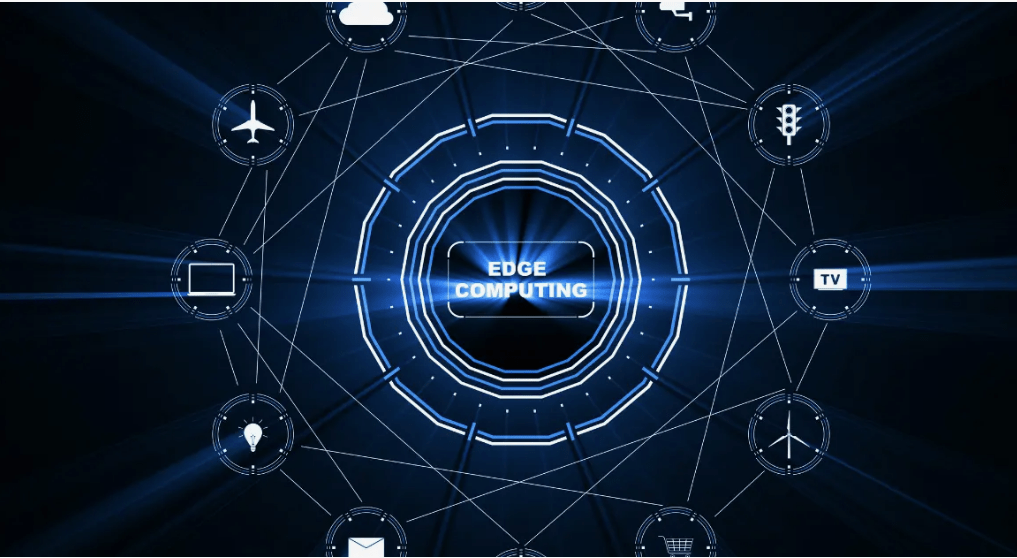Nowadays, businesses seek technologies that provide lower-latency operations with high-performance computing abilities.
Edge computing is a distributed computing technology that shifts data processing and storage options close to the point of data generation.
This technology reduces latency, minimizes downtime, and improves the speed and efficiency of your business operations.
In this article, let’s discuss implementing edge-type computing for optimal business performance.
What is edge computing?
Understanding edge computing is crucial before proceeding with implementation. Edge computing is a distributed IT architecture that processes data at or close to the location where it is generated. By processing data closer to its source, your company can obtain real-time insights, lower latency, and lessen the strain on centralized infrastructure.
Industries such as manufacturing, healthcare, finance, and retail that need to make decisions quickly will benefit most from edge-type computing. With the growth of the Internet of Things (IoT), edge computing has become increasingly popular in managing the massive amounts of data produced by connected devices.
Steps to Implement Edge Computing
There are some steps that you must follow to implement edge-type computing successfully. Let’s discuss it in brief:
- Assess Business Needs and Objectives
The first and most important step is to assess and acknowledge your business goals and the objectives you wish to achieve. It includes identifying the specific business needs and a list of goals. This analysis requires understanding your company’s mission, market demands, needs, challenges in business operations, and crucial growth opportunities.
When you clearly define goals and objectives, such as customer satisfaction, improving efficiency, decreasing costs, and enabling the integration of new services and technologies, you create a vision in the minds of all the teams. This also ensures that the objectives are aligned with the implementation of edg-type computing.
- Start small and scale gradually.
Start small and scale gradually refers to a strategic approach to edge computing implementation that involves starting with less implementation of edge technology and gradually increasing it to meet all the needs and requirements. It also tests whether your system is optimized to handle the edge implementation.
You can check the feasibility of edge-type computing within a specific area for use cases, check for potential challenges, and refine strategies based on real-time insights and information. With this strategy, your company can effectively handle risks, reduce upfront costs, and collect valuable information on performance and expandability. Once the deployment process is completed, you can expand the edge infrastructure effectively.
- Utilize partnerships and expertise.
You can utilize the power of partnership and expertise, which means collaborating with tech providers, consultants, and managed service providers who work in edge computing to improve the implementation process.
This collaboration brings proper knowledge, integrates high-end tools, and includes proven strategies that help you explore the complex work structure of edge-type computing. When you acknowledge their abilities and take advantage of their expertise,
- Prioritize Security from the Outset
Security from the outset refers to an integrated practice involving security methods and measures in designing your system and its phases. It means that security is the base of your overall IT infrastructure. Edge-type computing includes processing data closer to its source of generation. It has multiple points of vulnerability on several devices and networks.
Conduct risk assessments to secure your crucial data and maintain the system’s integrity. Effectively establish strong security protocols and implement encryption and access controls to keep your company’s confidential data safe and secure for a long time. After implementing these advanced methods, you can keep your infrastructure safe and secure from all potential threats.
- Focus on Compatibility
Compatibility plays a huge role in edge technology integration. It means ensuring that different systems, applications, and software work effortlessly in your company’s architecture. In an edge computing environment, data is frequently processed from different manufacturers on several platforms and devices.
A system’s overall performance can be hampered by inefficiencies, data silos, and integration difficulties resulting from non-interoperable components. Prioritizing interoperability helps various technologies work together, interact, and exchange data—essential for ensuring seamless operations and producing the best possible business results.
- Continuously Monitor and Optimize
Key performance indicators (KPIs), system health, and data flow must all be closely monitored after the first implementation to spot any possible problems or inefficiencies. Proactive monitoring can identify issues early on and resolve them, keeping your system dependable and effective.
Optimization entails making the required changes, such as upgrading software, rearranging hardware, or streamlining procedures, to maximize resource consumption, minimize delay, and improve performance.
- Invest in Talent and Training
Your current IT staff might need further training or upskilling to handle the complexity of this new infrastructure because edge computing involves sophisticated, frequently specialized technologies. Your staff can stay up-to-date on the newest techniques, tools, and trends in edge computing by investing in training courses, certifications, and continuing education.
Furthermore, bringing on fresh personnel with specialized knowledge in edge computing can expand your team’s skills. By developing a competent staff, your company may fully take advantage of edge computing, lower mistake rates, and promote efficiency and creativity in your operations.
- Evaluate and Iterate
Once implemented, it’s critical to continuously assess edge computing solutions’ performance about your business objectives and critical KPIs. This entails data analysis, feedback collection, and the identification of potential improvement or adjustment needs.
You should next engage in a cycle of continuous improvement by using the insights obtained from this evaluation to improve and optimize your strategy, technologies, or procedures.
Bottom Line
Implementing edge solutions is essential for businesses looking to optimize their overall performance. Edge-type computing requires a strategic and well-planned approach that matches your business objectives and requirements. If you focus on elements like infrastructure management, scalability, and security, your business can effectively utilize the overall potential of edge technology. The steps mentioned above and precautions are important if you look forward to creating a successful edge environment.
Read More : https://nybpost.com/9-best-practices-for-compliance-and-governance-in-a-cloud-first-environment/

